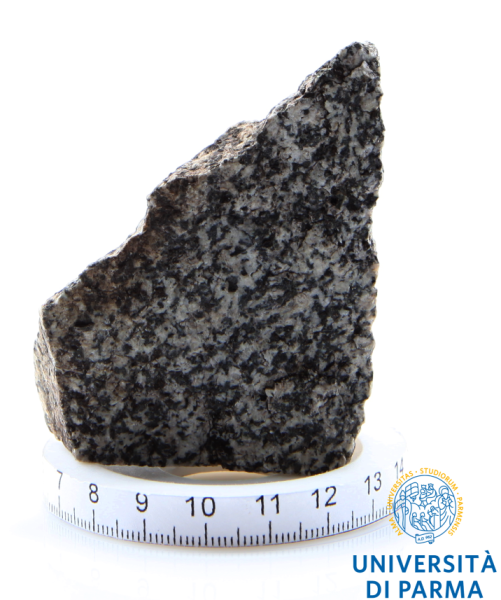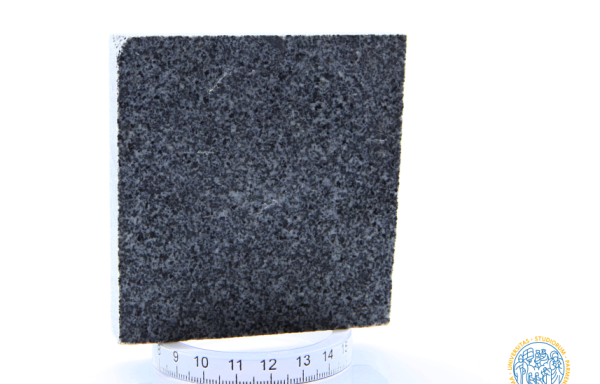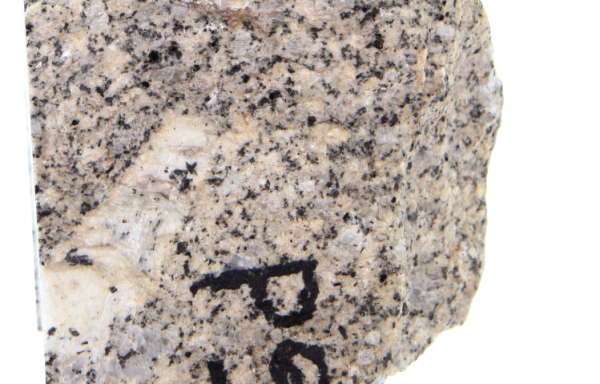Rock
Phaneritic rock made of randomly oriented large crystals. By naked eye, the rock appears to be chiefly composed of feldspar (grains with a milky white aspect) and mafic minerals (grains with a pale to dark green colour). The few small black grains with a sparkly effect are mica. The rock sample comes from the Mt Monzoni intrusion (see the P3 monzonite for geological details).
Thin section description:
The photomicrographs show a field chiefly made of colourless minerals with a dusty aspect. These minerals are plagioclase (Pl) and alkali feldspar (Afs) slightly altered to sericite. The distinction between Pl and Afs is not easy in the PPL view, but it can be made in the XPL view because the Afs shows no multiple twinning, whereas most of the Pl are multiple twinned (e.g., Pl (2)). Care must be taken not to confuse the (010) faces of Pl with Afs faces. Indeed, the former show no twinning and these faces can be identified in the XPL view only if they exhibit zoning (zoning is common in Pl mineral as it belongs to a continuous solid solution series). The Pl (1) crystal is an example of (010) face that also exhibits a discontinuous zoning.
The mafic minerals of the rock can be identified by the following characteristics: biotite (Bt), pale to dark brown colours in the view under PPL; clinopyroxene (Cpx), easily recognised in the XPL view when the crystals show high (blue second-order) interference colours and/or twinning; amphibole (Amp), recognised in the PPL view for the pale green colour. The black areas in the PPL view are occupied by opaque minerals (Opq).
| thin section PPL |
thin section XPL |
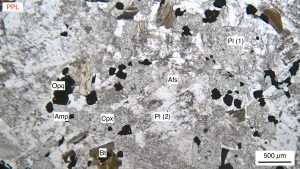 |
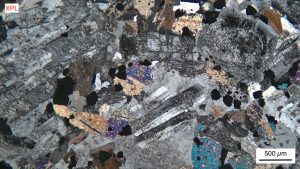 |
Map
PPL
XPL
Info
| Place: | Mt Monzoni (Dolomiti) |
| Classification: | monzonite |
| Specimen n°: | P5 |

